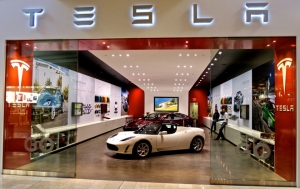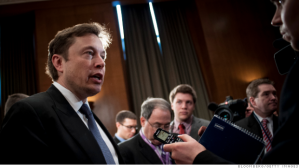[PROBLEM STATEMENT]
Imagine a world where buying a car only required rolling out of bed, picking out your preferences, and clicking “Order” via the internet while you sip on your morning cup of coffee, similar to ordering a product from Amazon. This direct-to-consumers sales model is exactly what Tesla Motors Inc. is doing, and it is causing an uproar and legislative opposition from automobile dealerships across the United States. Many believe this sales practice could put traditional car buying practices at risk for dissolution, and as such any decision or agreement potentially represents billions of dollars of sales over the long term.
Tesla Motors, Inc., formed in 2003 by the (in)famous Tony Stark-like CEO Elon Musk, is a rapidly growing automobile manufacturer that specializes in electric vehicles and powertrains. Most recently, it has released and had success with its Model S, a high-end electric vehicle capable of traveling over 250 miles on a single charge, with a hefty price tag of between $70-90,000. Since its beginnings, Elon Musk has led his company to be “disruptive[to the status quo]” in more ways than one, expanding the boundaries for business practices, technologies, and operations standards across the United States market. Beyond the obvious nature of his unique vehicles, Musk also aims to change the way that cars are sold to customers in the United States and abroad.
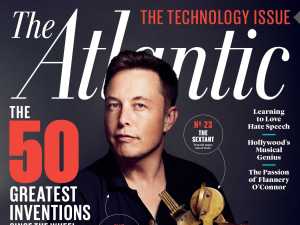
Tesla CEO, Elon Musk
Dealerships see no other way of conducting their business beyond the way it has been done for the past 80 years. According to dealers, the franchise model protects dealers and consumers from large manufacturers and uncompetitive business practices, disallowing automobile manufacturers from employing discriminatory or predatory pricing. Accordingly, dealers have sought to block Tesla’s operations across the United States.
Tesla however maintains that their sales strategy is essential to their business model. As an organization, they employ firm pricing controls on its automobiles (known as Colgate pricing), disallowing the haggling that has become so dreadfully thematic in the American car-buying experience. As they see it, this control strategy eliminates a number of costs, such as unnecessary inventory creation. The direct-to-consumer sales model is a differentiator, something Tesla believes would be lost were it to operate through third party franchises. Tesla is battling, state by state, a long-valued tradition for franchise car sales in the United States.
[ROLE OF THE STATE]
It is important to note that, no matter the explicit interests of either side, automobile sales are mostly regulated at the state level. State legislatures and courtrooms serve to facilitate the conversation and lobbying by both sides of the issue. Although we would like to believe that these institutions are unbiased, it is in these venues that dealerships are able to leverage their political campaign contributions and considerable lobbying clout to win over policy makers. Indeed, in certain states, such as New Jersey, government leaders have been exceedingly blatant in their disdain for Tesla’s wanted practices, and in their support for dealerships. For Tesla, this structure, and the embedded position of dealers in state legislatures, presents a further obstacle to changing market practices, as it forces Tesla to negotiate in a potentially biased environment.
[BARRIERS AND BIASES]
Their Gain is Our Loss and Fixed Pie
Often in negotiations, parties enter the conversation assuming that the negotiation is a zero-sum game; meaning, they believe anything that is good for one party must be bad for the other party–a fixed pie bias. Both the car dealerships and Tesla are fighting over what they believe to be a limited amount of resources, or a “fixed pie”. Rather than investing in opportunities for an integrative approach, meaning looking for tradeoffs and creating additional value, both sides have simplified the negotiation down to a zero sum game: the market is a certain size and there is only room for one type of automobile sales model. This mindset, however, prevents negotiators from looking for additional tradeoffs that would increase the size of the pie for both parties involved. As Bazerman, Baron & Shonk (2001) noted, this barrier causes competing entities to fight battles rather than pursue tradeoffs that can subsequently make both parties better off.
Tesla’s goal is to be different. They describe themselves as disruptive and are attempting to create a new market and strategy for electric vehicles. Tesla Motors entered this negotiation with the belief that the direct sales model was the best and only strategy for their organization. Unfortunately, their groundbreaking strategy overlooked resistance and activism brought upon by traditional car dealerships. Tesla feels that any deviation from their model will negatively impact their market strategy and subsequently their profit. According to Tesla, traditional dealerships will not prioritize Tesla products, resulting in Tesla losing sales to traditional gasoline powered vehicles. Because electric cars are a new and unique product, there is an inherent conflict of interest for dealerships, as selling an electric vehicle requires selling the product as a superior alternative to gasoline vehicles–their major source of revenue.
In contrast to Tesla’s position, car dealerships see Tesla as an organization that is out to ruin the traditional dealership model. Dealerships across the country argue that Tesla is leaving them completely out of the value creating process. Rather than finding a way to work within the traditional dealership model, dealers argue Tesla is attempting to create a monopoly by circumventing practices that have been in place for over 80 years. The direct sales model Tes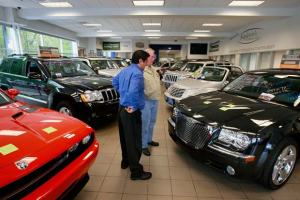 la is advocating for, dealerships believe put consumers at a disadvantage, specifically eliminating a consumer’s ability to “shop around” for their vehicle of choice. Their current position is that Tesla needs to abide by the same rules characteristic to all dealerships. If Tesla deviates from this model, dealerships see themselves as “losing” the battle.
la is advocating for, dealerships believe put consumers at a disadvantage, specifically eliminating a consumer’s ability to “shop around” for their vehicle of choice. Their current position is that Tesla needs to abide by the same rules characteristic to all dealerships. If Tesla deviates from this model, dealerships see themselves as “losing” the battle.
Live For The Moment and Status Quo Bias
Another barrier often found in a negotiation is the idea of living in the moment. Parties in the negotiation focus on the present without considering future impacts. This approach is often short sighted, unsustainable, and neglects future harm (Bazerman, Baron & Shonk, 2001). This barrier can contribute to parties missing value-creating opportunities or engaging in irrational decision-making. In this specific scenario, car dealerships are experiencing a form of status quo bias. They want to maintain the status quo, and are not willing to allow a competitor to enter the market and alter the traditional method of buying and selling automobiles. Dealerships are unwilling to give up their current practices, even if Tesla could provide additional value to their market. To overcome this barrier, negotiators must be willing to accept small losses in the present to obtain long-term benefits.
On the other hand, Tesla Motors is a new organization aiming to make a splash in the automobile market. They have a very unique product and a strategy that serves its current needs of controlling the experience; for example, there is no negotiating and no commission for selling Tesla cars. This is a value-creating model for the brand and a strategy that directly targets their current specific consumer type. Although Tesla claims that franchised dealerships do not appeal to the needs of the organization, as an organization they are ignoring potential future situations. For example, last year Tesla sold about 25,000 vehicles globally; however, General Motors often sells more than 25,000 automobiles daily. As Tesla grows and expands beyond its current clientele, they may need to consider a new strategy for distribution, one that incorporates the use of dealerships. Their recent actions are burning relationships with dealerships and states that should be cultivated.
In conjunction with Tesla’s barriers, dealerships are putting themselves in a similar position by appearing to be inflexible with their model. In general, dealerships are eager to sell the Tesla given its popularity and are eager to point out the benefits that Tesla could enjoy. As noted above, as Tesla grows and expands, they will likely need to consider using franchises to sell their vehicles; dealerships have noted this expected obstacle and believe the franchise model could work for the organization. Unfortunately, dealerships believe Tesla will only see these benefits if they conform to the traditional model of the automobile sales industry now. Dealerships are focusing on short term concerns and do not seem to be considering the benefits that can come from Tesla entering their local market in any capacity
[OVERCOMING BARRIERS]
Overcoming the barriers discussed above requires both parties to reach the realization that the end result is not “win-lose” (zero-sum), and that there is an outcome that could provide a “win-win” result. In this way, in order to bring dealerships and Tesla together, proponents should be prepared to expand the perceived pie, and should be willing to make concessions in order for negotiations to succeed past empty-handed stand-offs. After all, both sides would likely benefit from an agreement under certain conditions, especially considering the rather high transaction costs of state lobbying and debate.
As outlined above, the inability to determine all possible elements of any possible agreement — because of a fixed-pie approach by both sides — prevents Tesla and auto dealers from realizing or reaching any compromise. As seen in New Jersey and other states that have offered opposition, failure to bring all options and components to the table incites both parties to reach no mutual agreement (i.e. at surface-level interests, no ZOPA exists). Any negotiation tactic should rather work to broaden the range of issues subject to negotiation, such as the number of stores, time constraints for operation and location of stores. As such, both Tesla and the competing dealerships should transparently delineate the full spectrum of their interests related to automobile sales, including both the obvious (that are generally easily predicted), as well as the potentially more specific and imperceptible; for example the number of Tesla company stores as well as potential opportunities for dealerships to sell Tesla automobiles. Doing so would allow for an expansion of the zone of possible agreement (by allowing more give-and-take in any negotiation), and help to mitigate the mutual mistrust (and perhaps disdain) between Tesla and traditional automobile dealers that serves to undermine negotiation efforts. Further, including these interests would undeniably reveal preferences for, and considerations of, long-term goals; doing so would help mitigate – for Tesla especially — living for the moment biases. Tesla should be convinced to consider an operating environment in which it is not limited by supply (as it is now, due to manufacturing constraints), but by demand.
By reframing the debate to include topics of conversation beyond the simple allowance or disallowance for Tesla’s practices in specific states, it is likely that successful negotiations might coalesce into a few possible “better” agreements that provide each side with long-term benefits, based on tradeoffs in a continuous spectrum rather than discrete outcomes. To start the conversation, it may also be more successful for Tesla to speak with each dealership group separately, rather than allow for a coalition to build (“us against them”) to completely insurmountable levels.
[SOLUTION]
One possible agreement, and likely the most probable would allow for operation of a few stores in a state, but necessitate collaboration with existing or new dealerships for further expansion (expectedly after a few years). This would preserve the short-term benefits Tesla currently enjoys as it works to create a market share and increase its brand image (that depends highly on perfect control of sales experience), while ameliorating dealers’ concerns of being marginalized in the long term. This solution would emphasize Tesla’s role in delivering increased capacity for electric vehicles in many states, as it works to implement electric charging stations (which it often only does if it is allowed to sell its cars in a specific state).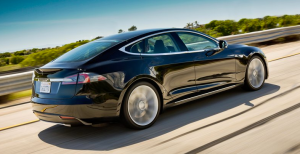
Another possible agreement may revolve around the stipulation that Tesla’s vehicles must be sold in dealerships, but may only be sold by dealerships specializing in electric or hybrid vehicles (such as the Nissan Leaf, Chevy Volt, Toyota Prius, Honda Insight, etc.), in order to maintain Tesla’s image as a high-end electric car option, and mitigate the worries that dealers would steer customers towards cheaper ICE automobiles.
[HOW THE SOLUTION AMELIORATES OBSTACLES]
Focusing specifically on the first arrangement allows for a limited number of Tesla showrooms, in return for the necessity to utilize traditional dealerships (in some capacity), further down the road if and when expansion of distribution capacities is needed. This solution allows both Tesla and dealerships to achieve perceived gains, such as Tesla being able to sell their vehicles in the immediate future and dealerships obtaining gains in the long run. This arrangement should end unnecessary debates on who deserves what. Most notably, it expands the pie by developing issues such as limits on the number of stores, and timeline of operation, but does not eliminate value gained by either party. Such a solution also emphasizes the need for Tesla to think about long-term business planning and how dealerships may fall into that strategy, as it is indeed true that widespread distribution might be extremely difficult and costly without recruiting the aid of traditional dealerships or franchises.
[POTENTIAL OBJECTIONS]
There are of course potential objections to this solution. Most notably, there is no guarantee that Tesla would be willing to accept limits on the number of stores it may open in what it might consider high-market states such as New York, California, or Connecticut (unless it were allowed to open its stores in “flagship” areas, much like Apple does with its own locations). Further, the lobby groups and interests of national auto dealers may not be able to reach an agreement that is amenable to all parties within that industry (as one group of dealerships may be willing to provide concessions, whereas another is not), potentially stagnating the negotiation process.
Lastly, the state legislatures, in which the decision may be formalized (i.e. allowing Tesla to continue “showroom” operations outside of a traditional dealership franchise) may impede negotiations, or find disagreement with the proposed solution due to political interests outside of the scope of either Tesla or dealerships. In addition, there are notions of free publicity that may impede a still-growing Tesla from conceding on any particular items. In addition, continuing the “fight” without reaching an agreement has allowed Tesla to paint other automakers and dealerships as backwards protectionists who use illicit lobbying schemes to suppress Tesla’s innovative and forward-thinking practices and products. Coupled with the company’s theme of disintermediation, it is perhaps even likely that Tesla does not particularly seek any negotiation settlement at this time.
[CONCLUSION]
There is an opportunity for both Tesla and traditional car dealerships to obtain value from a negotiated agreement. Rather than fighting a “win-lose” battle, both parties should look to expand the perceived pie and broaden the possible ZOPA by increasing the number of issues, while also considering long term issues that will affect both parties (moving away from the status quo). The resulting agreement would theoretically allow Tesla to operate using its ideal sales model now, while also allowing car dealerships to reap the rewards Tesla vehicles can offer in the future as demand for these vehicles rises–resulting in increased value for both parties.
